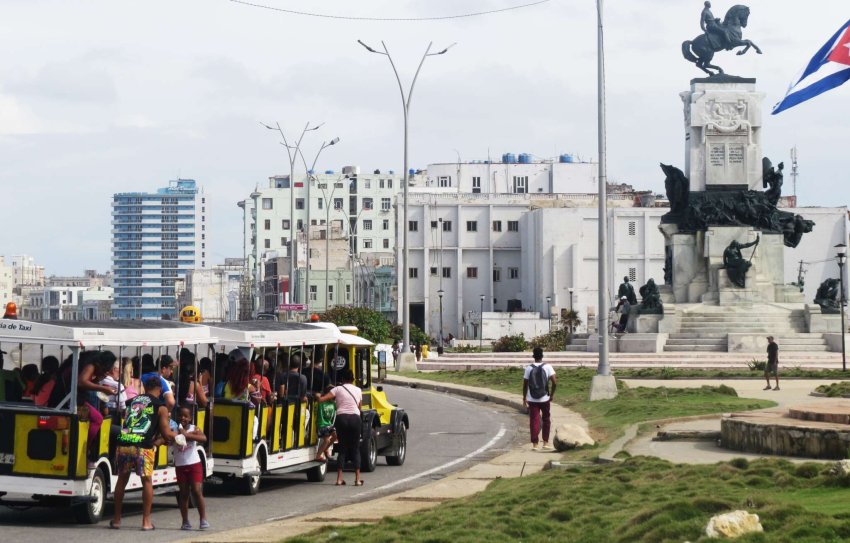
Outgoing United States President Joe Biden’s administration decided on January 14, to remove Cuba from the US State Department’s list of alleged “state sponsors of terrorism”, to suspend Title III of the Helms-Burton Act and to ease a few other financial sanctions on Cuba. These reversed measures imposed by Donald Trump during his first presidential term as layers added on to the existing blockade, and the Biden government upheld them until now, with just one week to go.
At the same time, but in a separate announcement, Cuba said it would release 553 people “imprisoned for various crimes”. The Cuban government said the measure was part of an ongoing relationship with the Vatican. In talks with the Vatican in 2023, Cuba also stressed the damage caused by the US’s policies toward Cuba.
The US’s inclusion of Cuba on its list of alleged state sponsors of terrorism in early 2021 meant a global restricting of almost any kind of humanitarian aid, business, investment and trade that involved Cuba. Title III of the Helms-Burton Act allowed US citizens to sue any person or entity profiting from property expropriated by the Cuban government during its revolution. Its main impact was limiting foreign investment in Cuba.
Unfortunately, though a step in the right direction, the Biden administration’s eleventh-hour gesture is unlikely to change the conditions of intense scarcity under which most Cubans currently operate, as the blockade itself remains. Further, given Trump’s opposition to the Cuban government — as well as the vehement opposition expressed by his nominee for secretary of state, Marco Rubio — it is unlikely that this token gesture from Biden will last.
As I walked around Havana last week, the cumulative impact of more than six decades of the blockade was clear. It seemed that everywhere I went people were hard at work trying to fix cars or carts, water trucks or air conditioners, usually without access to the manufacturer’s official replacement parts. And while a culture of repair rather than extreme levels of consumption is a positive thing, key infrastructure like thermal plants have surpassed their lifespan and may be beyond repair, as crucial parts haven’t been obtained due to the blockade.
421 - Cuba cr Tamara Pearson img_4103-1-2048x1536.jpg
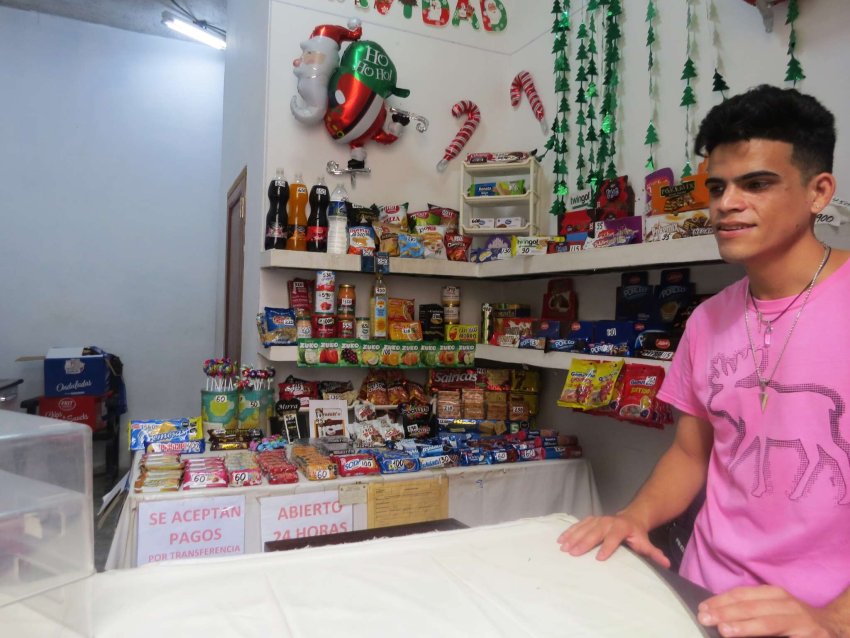
In October, 187 countries once again voted in the United Nations General Assembly for an end to the US embargo against Cuba, with just the US and Israel against lifting it, and Moldova abstaining. Aurelie Flore Koumba Pambo, Gabon’s representative to the UN, said the blockade is “harmful to the Cuban people”. The Cuban economy has also been severely impacted by the pandemic, currency reform and the rise of small businesses or MIPYMES. As Trump is about to be sworn in, Cubans say they are struggling and worried, but also resilient and hopeful.
421 - cr Tamara Pearson img_4113c-2048x1364.jpg
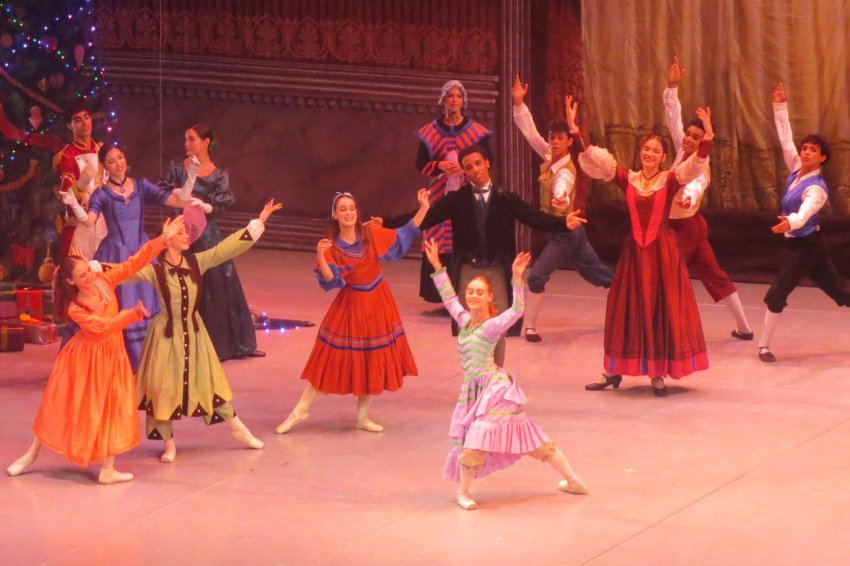
The oldest blockade
The US sanctions are complex and include asset freezes, export and import restrictions, travel limitations and financial transaction controls. Most commercial transactions with Cuba are prohibited, and in July last year, the US Treasury Department also announced additional restrictions blocking Cuba’s access to cryptocurrencies and other digital assets.
421 - cr Tamara Pearson img_4290-2048x1422.jpg

The stringency of the blockade means the US can extend its enforcement beyond its borders. In March last year, Swiss bank EFG International, for example, paid $3.7 million to settle its supposed civil liability with the US Department of Treasury for processing 873 transactions for clients based in or linked to people in Cuba, in violation of the blockade.
Other companies and banks, in fear of such reprisals or penalties from the US, refuse to work with Cuba. The Cuban government reports that between March 2022 and February 2023, 130 foreign banks refused to conduct operations with Cuban banks. It says US aggression toward Cuba includes intimidating companies that send it fuel supplies, and attempting to “undermine recovery of the tourism sector” after the pandemic.
Trump, in 2017, also interrupted fuel supplies and applied dozens of other sanctions on top of the regular ones, and these measures are still in place. The “state sponsors of terrorism” designation resulted in cancelled investments and import and export plans, and that loss of foreign exchange then supercharged inflation in Cuba.
The price of eggs and the cost of fuel shortages
Workers in many different sectors of the Cuban economy say they are facing particularly difficult conditions right now — conditions that are unlikely to change due to this week’s limited reversals.
Angel Rojas, who works in a grocery shop as well as driving a taxi, shared his reflections during a conversation in Havana over the New Year.
421 - cr Tamara Pearson img_4393-2048x1203.jpg
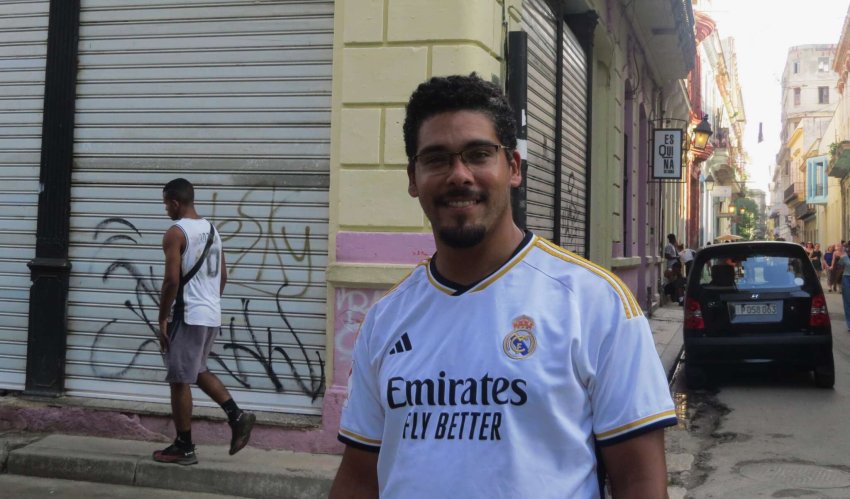
“Things at the moment are a bit difficult,” Rojas told Truthout. “Speaking as a taxi driver, buying fuel is quite complicated. You have to top up a government card, or you can obtain fuel from the state using Metropolitan Bank cards. Then there’s fuel scarcity.”
Rojas explained that there is a lack of fuel trucks to transport fuel from refineries, on top of fuel scarcity itself. “You have to wait in line for many hours, sometimes two or three days,” he said. “The government has made an app, so you can see which gas stations have supply and of what type of fuel.”
“Likewise, there is some food scarcity. It’s not that you can’t find food, just that it’s scarce and sometimes you have to go to a lot of effort to find something like eggs, or you have to line up. Sometimes you have to travel quite far to get something, but people who don’t have cars, well it’s hard for them buy some things,” he says.
421 - cr Tamara Pearson - img_4363-2048x1517.jpg
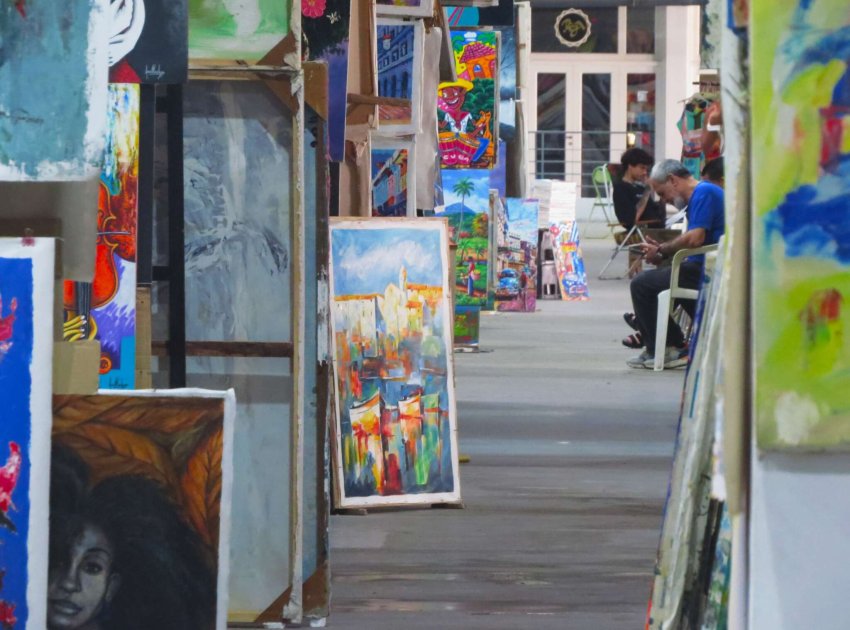
Walking around Havana, it’s noticeable how the shortages in public transport affect all aspects of life, with people waiting for hours to hitch a ride, filling buses on the limited routes available, or paying 200 Cuban pesos for collective taxis. While the mostly empty roads are better for the air quality, the transport shortages impact production, goods distribution, mobility, working and socialising. A lot of used vehicles have been donated by other governments, but they are old, and with the blockade, repair parts often aren’t available. Improvisation is essential: a kids’ train is currently being used to transport tourists and locals along the capital’s Malecón esplanade.
Deficiencies of one resource trigger disruptions in other sectors. Speaking to Truthout, Virgin Maria de los Reyes Cordoba, who retired after spending 40 years working as a maritime transport technician and is currently working as a secretary to the editor of the Havana Tribune, gave the example of eggs. She noted how farms have been affected by the recent hurricanes, but that poultry farms are also struggling to produce eggs due to the lack of chicken feed. Further, farming products have to be transported around the country, but fuel shortages limit that movement.
421 - Cr Tamara Pearson - img_20241229_160651026_mf_portrait-2048x1461.jpg

An “aging” economy, she said — one that hasn’t been able to update its technology due to the sanctions — “has stopped us from advancing in other areas … we lack so many things, the country has become heavily focused on imports, leaving domestic production somewhat behind”.
“Cuba is having to import sugar, for example, because the old sugar mills are based on old technology and it’s hard to obtain the spare parts to keep them going … The shipping fleet is another thing that has deteriorated, so now we practically don’t have boats, and that impacts fish supply,” she explained.
421 - cr Tamara Pearson - img_4494-2048x1455.jpg
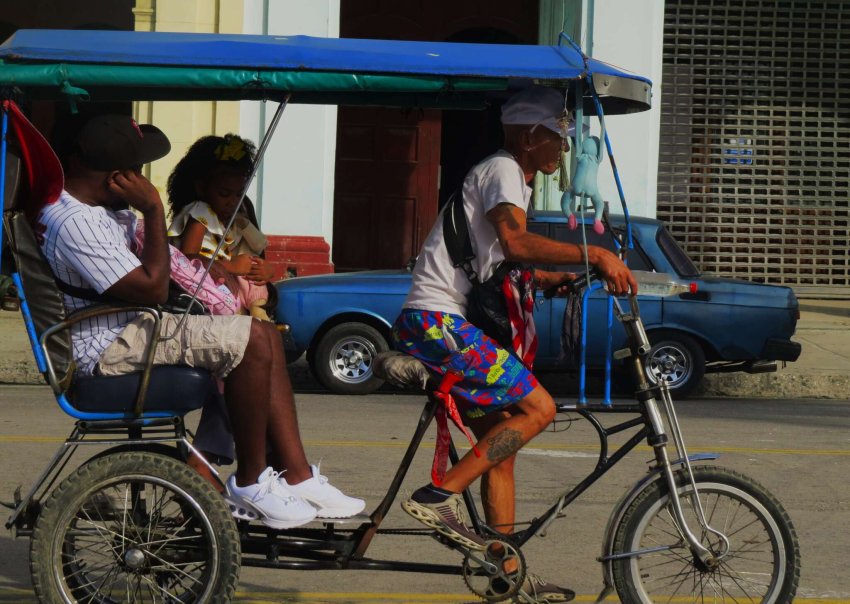
Lethal economic attacks
According to the Cuban government, in its annual report on the blockade, just half an hour of sanctions cause economic damage “equivalent to the cost of the electronic and conventional wheelchairs” required to meet the needs of students in the special education system. “At current prices, the damages accumulated during more than six decades of implementation of this policy, amount to $164 billion”, the report notes, with the annual financial damage of the blockade increasing by $190 million from February 2023 to March 2024, for a total of more than $5 billion that year.
Beyond food, the blockade is affecting life-saving medical treatment. Cuba hasn’t been able to purchase blood gas analysers from Radiometer for critical patients in intensive care, because the company is part of Danaher Corporation, based in the US.
Last year, Cuba needed to buy four cooling machines that are vital for manufacturing medicines, but the European manufacturer cancelled its contract for the sale after it was acquired by the US multinational, Trane Technologies. The list goes on.
421 - cr Tamara Pearson - img_4507-2048x1462.jpg
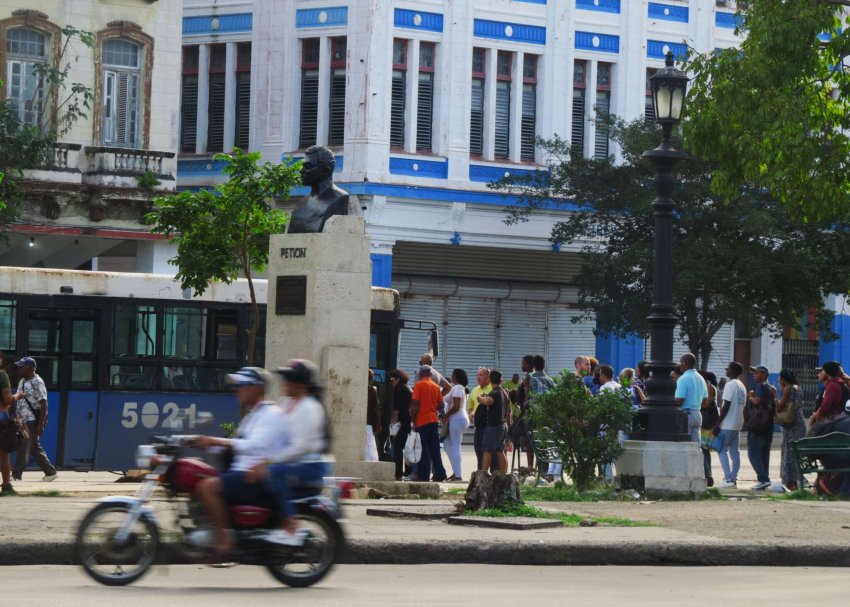
A lack of medical supplies like cotton and gauze has led to a decline in surgeries, Reuters reports. Current production of some food staples has declined by as much as 80% compared to prior to the pandemic, and Cuba can only acquire 40% of the fuel, 4% of the fertiliser and 20% of the animal feed it needs, according to Reuters.
Nevertheless, the country continues to strive to provide free and preventative health care. I noticed that the policlinics (outpatient care) were always open, and one person told me how, in the lead-up to giving birth, she was visited by nurses every few days.
Recent increases in inequality and shortages
Things have gotten notably more difficult in Cuba over the past four to five years. To help cope, private and state-owned micro, small and medium companies, called MIPYMES (micro, pequeñas y medianas empresas), have been permitted since 2021 and are growing in number. In July, there were 11,044 private MIPYMES and 222 state-owned ones registered, though many small-scale sellers may not be registered.
De los Reyes says a lot of importation now happens through the MIPYMES — typically small family stores — and they are “basically supplying the country … but they sell products at very high prices, and much of the population can’t afford them”.
For example, I bought a small can of sardines for 300 Cuban pesos, while de los Reyes says a doctor typically earns 5,000 Cuban pesos a month. Of course, people with small businesses or working independently tend to earn significantly more than that.
421 - cr Tamara Pearson - img_20241228_130939176_hdr-2048x1144.jpg

The government has implemented other policies in an effort to access more foreign currency and to be able to import. The dual currency system, implemented in 1993 and 1994 to combat the black market in US dollars involved a national peso (CUP) and a convertible peso (CUC) equivalent to the dollar. But it was eliminated in 2021 after MLC (moneda libremente convertible, or freely convertible currency) cards — a virtual currency used in state shops and meant to be equivalent to the dollar — were created in 2019.
Since then, Rojas said, “the national currency has been depreciating”.
“The MLC, based around remittances … was a way for the government to have foreign currency, in order to be able to import fuel, food and parts for repairs,” Rojas told Truthout. “Because the thing is, the MIPYMES use cash, and so they buy things from abroad with foreign currency and sell them here, and the foreign currency … never makes it to the government.” However, he added, the amount of money coming in via the MLC, such as in shops that only accept payments with MLC cards, is very little.
Then, the pandemic in 2020 saw tourism revenue plummeting, and along with the currency reform, some state subsidies and gratuities were eliminated in 2021.
421 - cr Tamara Pearson - img_20241229_132853044_hdr-1-2048x1144.jpg
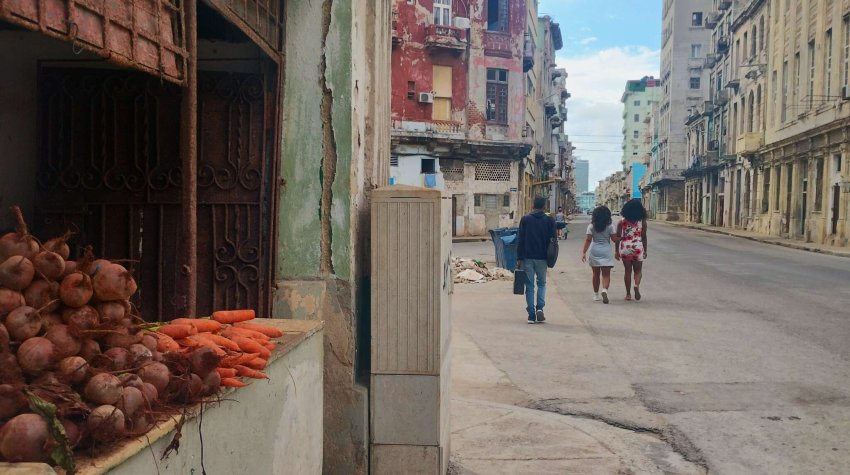
“Before 2020, we were happy,” says de los Reyes. “There weren’t these shortages, industry was working, with problems and all, but largely working.” However, she explained that other Global South countries’ economies were also hit hard during the pandemic, and they were no longer able to send as much help to Cuba. Further, a lot of professionals have emigrated, “leaving Cuba without a lot of skilled health and education workers”.
The Cuban government provides families, children under 13, and people over 65 with basic supplies like milk, rice, beans, coffee, cooking oil and sugar. Rojas said sometimes these supplies arrive late, causing his family to receive the previous month’s supply together with the current month’s, but noted that in the end, “we do always get it”. Nevertheless, he said, the monthly staples aren’t usually enough.
Discontent, worry and hope for the future
“Currently, there’s a lot of discontent,” Rojas told Truthout. “A lot of people are very angry at the government because they believe everything is its fault. Many families have been emotionally affected. Our typical ways of being, of solidarity, of helping out a neighbour, sharing out the food we have — even if it isn’t much, is something you see less of now, because families are struggling to be OK.”
421 - cr Tamara Pearson - img_20241229_133709196_hdr-2048x974.jpg
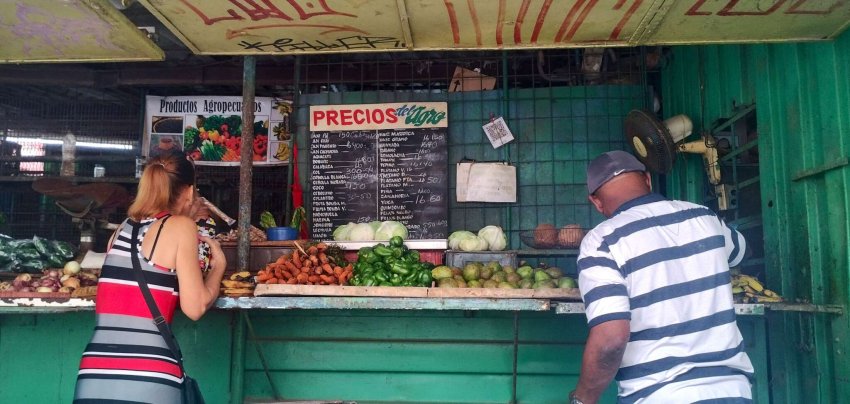
He described people sometimes arguing or fighting, “physically or verbally attacking each other over things that aren’t that important” as a result of the stress of the current situation. Also, increasing inequality means one family may have more than another, leading to insecurities and tension in the community. “The unity that there has always been, during celebrations and gatherings, has been negatively impacted,” Rojas said. “It’s sad to see, especially because in the past, when there were issues, people knew how to work them out together.”
The incoming Trump administration could not just undo Biden’s recent reversals, but also increase sanctions and travel restrictions even further.
Rojas said he is worried about what that could mean for fuel and food supplies. “The blockade could be intensified … [Trump] has promised mass deportations … and a lot of Cubans, in order to migrate to the US, sold their homes, so now they have nothing here.”
But while the blockade can be demoralising, many in Cuba are keeping their spirits up through the creative arts. Cuba is thriving with culture. I went to the ballet where tickets are just 150 Cuban pesos, and the National Theater was packed with locals, many of whom walked long distances home afterward due to the lack of transport; and you can go to the baseball stadium for 50 Cuban pesos, the aquarium for about 20 Cuban pesos and catch the ferry across the canal for 2 Cuban pesos. From small home-based galleries, to a warehouse full of artists and a cooperative engraving workshop, art is everywhere in Cuba, and mundane chain stores are not.
421 - Cuba cr Tamara Pearson - img_20241231_103405008_hdr-2048x922.jpg

“There’s hope in the unity of people here, and there’s trust in the leadership [of Cuba], because one way or another, they usually manage to weather difficult situations. Us young people are the hope, those of us who stay here,” Rojas said.
“It’s very difficult. But we are managing. One finds a way to stay afloat. Cubans are inventive, creative. We work out a way to get through things,” concluded de los Reyes.
[Abridged from Truthout.]